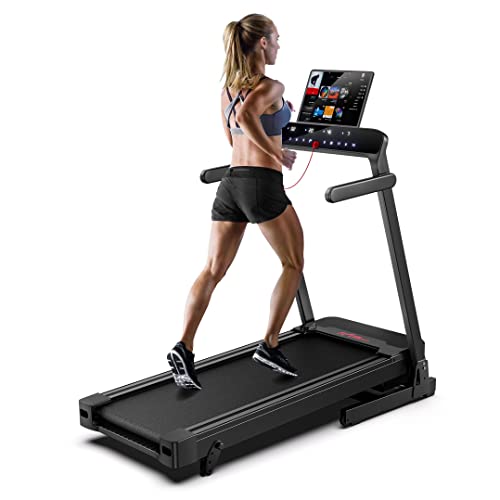Non-Folding Treadmills: The Ultimate Guide for Fitness Enthusiasts
As home physical fitness continues to get traction, numerous individuals are seeking devices that meets their needs without compromising quality or efficiency. One key player in this arena is the non-folding treadmill. Unlike folding treadmills, which are designed for density and mobility, non-folding treadmills are normally more robust, using enhanced resilience and machine efficiency. This guide will check out the functions, advantages, limitations, and options offered for non-folding treadmills.
What is a Non-Folding Treadmill?
A non-folding treadmill is a fixed workout machine that does not have the ability to fold its deck for storage. Specifically created to be a long-term component in fitness areas, these treadmills generally have a bigger footprint, enabling for a host of comfy features fit for serious runners and gym-goers.
Advantages of Non-Folding Treadmills
- Stability and Durability: Non-folding treadmills generally have a stronger construction, giving them improved stability throughout high-intensity workouts. They are developed to handle diverse user weights and running paces, which can prolong their lifespan.
- Advanced Features: Many non-folding models come equipped with innovative technological functions, such as wise display systems, automated incline modifications, and pre-set workout programs, which deal with severe fitness lovers.
- Larger Running Surface: These treadmills typically supply a larger and longer running location, which can be particularly beneficial for runners who prefer to train at greater speeds or for those with longer strides.
- Better Motor Performance: Non-folding treadmills typically have more effective motors compared to their folding equivalents, permitting better efficiency during extreme running sessions.
Disadvantages of Non-Folding Treadmills
- Area Requirements: Since they do not fold, non-folding treadmills require more space in your house or health club. If space is a restraint, this may be a critical factor to consider.
- Absence of Portability: These devices can be cumbersome to move. It is challenging to transfer a non-folding treadmill compared to a folding one, which might be a downside for those who move frequently or rearrange home health club layouts often.
- Price: Non-folding treadmills are usually more pricey than folding treadmills, primarily due to their advanced features and long lasting build.
Secret Features to Consider
When looking for the ideal non-folding treadmill, numerous features must be considered to ensure you make a notified choice:
| Feature | Importance |
|---|---|
| Motor Power | Search for a motor of at least 2.5 CHP for solid efficiency. |
| Belt Size | A belt width of 20 inches or wider is perfect for comfort and safety. |
| Incline Range | An incline of 10% to 15% offers more exercise variety. |
| Innovation Integration | Think about designs with Bluetooth capabilities, exercise apps, and heart rate monitoring. |
| Warranty | A robust warranty (at least 10 years for the frame and motor) suggests toughness. |
Top Non-Folding Treadmills on the marketplace
Here is a detailed overview of a few of the leading non-folding treadmills presently offered:
| Treadmill Model | Motor Power (CHP) | Running Surface (inches) | Incline (%) | Price Range (GBP) | Warranty |
|---|---|---|---|---|---|
| NordicTrack Commercial 1750 | 3.75 | 22 x 60 | 15 | ₤ 1,799 - ₤ 2,199 | 10-Year Frame, 2-Year Parts |
| Sole F85 | 3.5 | 22 x 60 | 15 | ₤ 1,699 - ₤ 2,099 | Lifetime Frame, 5-Year Parts |
| Life-span TR3000i | 2.5 | 20 x 56 | 15 | ₤ 999 - ₤ 1,299 | Life Time Frame, 5-Year Parts |
| ProForm Pro9000 | 3.0 | 22 x 60 | 15 | ₤ 1,499 - ₤ 2,299 | Life Time Frame, 2-Year Parts |
| Horizon Treadmill 7.0 AT | 3.0 | 20 x 60 | 12 | ₤ 899 - ₤ 1,099 | Lifetime Frame, 1-Year Parts |
Frequently Asked Questions About Non-Folding Treadmills
1. Are non-folding treadmills better than folding ones?Non -folding treadmills usually provide better stability, resilience, and advanced functions. This makes them ideal for severe runners, however it eventually depends on private needs and available area.
2. Can a non-folding treadmill be utilized for walking?Yes! Non-folding treadmills are not restricted to running; they can likewise be ideal for walking and can accommodate a wide variety of physical fitness levels. 3. How much area do I need for a non-folding treadmill? linked internet page is advised to have a dedicated location determining a minimum of 7 feet long and 3 feet large around the treadmill for safe use. 4. Is it possible to transfer a non-folding treadmill?While it can be done, it might require extra effort as they are generally much heavierand bulkier than folding designs. 5. What's the average life-span
of a non-folding treadmill?With routine upkeep and proper use, non-folding treadmills can last in between 10 and 15 years or more.
Non-folding treadmills represent a considerable financial investment
for those severe about maintaining or enhancing their fitness and health. With their focus on sturdiness, stability,
and improved functions, they accommodate users making every effort for efficiency and durability. Choosing the best design includes thoroughly considering your exercise practices, space accessibility, and budget plan. By understanding the attributes that make non-folding treadmills an exceptional alternative, individuals can make educated decisions that will boost their home fitness experience. Whether it's for walking, jogging, or high-intensity training, the best non-folding treadmill can be a considerable ally in achieving fitness goals.

